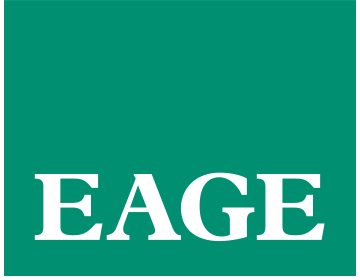Throughout May 2020 a ballot was held among our Members about a number of proposals for changes to the Constitution of the EAGE. The ballot closed on 1 June 2020 and all proposals were accepted by a majority of the votes.
Below you can find a description of the proposals and links to view the official Constitution in Dutch and an English translation with the approved changes.
The changes incorporated recent modifications to Dutch law.
The main proposals involved changes to Article XI Board Members and involved the position of the Vice-President-Elect, the date of the handover of the Board and procedure to appoint Board Members to the Board.
No Vice-President-Elect
Since the start of the oil and gas recession in 2015, a significant number of Board Members have faced job uncertainty. This often means that they have been unable to give EAGE business the full attention that they had intended. When discussing Board positions with potential candidates we have also found that many are in demanding jobs that leave little time for such an extended commitment. Our conclusion is that in the current professional environment, a three-year commitment is too long. We are therefore proposing to remove the office of Vice-President-Elect. These days the Vice-President-Elect performs few roles and tasks that are not jointly conducted with others. Under the proposal such joint tasks will be redistributed among others on the Board. This will enable a newly elected Vice-President to immediately engage at a high level in strategic planning and decision-making.
Smaller Board
A smaller Board (nine Members) can also be expected to be more effective in decision-making. Due to unforeseen circumstance, the current Board in fact has been operating successfully with only nine working members and so has already adapted in part to the proposed changes. Reducing the size of the Board will save on travel costs, particularly relevant when the President is supported by the Association (i.e. not sponsored). It is therefore proposed to eliminate the position of the Vice-President-Elect. This will shorten the term that a President has to serve on the Board, it will now be only two years. It is proposed that these changes become effective with the upcoming changeover of the Board in June 2020.
Changes to Article XI.6 are proposed to clarify the date of the Board handover. Under the proposal the Board’s term cannot inadvertently be extended beyond 1 July.
A further change to Article XI involves clarification of the procedure to appoint new Board Members in case of a mid-term vacancy. First, it is impractical for the Board to ask approval of the Members for a mid-term appointment as this would require an additional Ballot to be prepared and sent out to the Members. It is proposed that the Board may appoint a successor for the remainder of the term after which a Ballot will be held. Second, it is proposed to limit the number of appointed Board members to less than half of the Board, hence at any time a majority of the Board members has been elected.
The proposed Article XI is:
XI Board Members
1. Members of the Board shall be Members of the Association.
2. The Board consists of a minimum of seven Members including the President, the Vice- President, the Secretary-Treasurer, and the Chairs of the Divisions. The titles of other 3. Board positions are specified in the By-Laws.
3. An elected candidate for President becomes Vice-President for the first year of office, automatically becoming President at the beginning of the second year. The President is not eligible for re-election but the term of office can be extended in accordance with article XI.8.
4. The Chairs of the Divisions serve in a rolling sequence of twice two years. The candidate serves as Vice-Chair for a first period of two years. This is followed by a second period of two years as Chair of that Division and Member of the EAGE Board, following approval from the Members.
5. The Secretary-Treasurer and all other Board Members with the exception of the Chairs of the Divisions are elected for two years and can be re-elected twice. The maximum period in office for these positions is six years.
6. New Members of the Board assume their duties either at the end of the Annual Conference or at the end of the Annual General Meeting and before July 1 in the year they were elected.
7. In the event the position of President is vacated mid-term, the Vice-President will act as President for the remainder of the term.
8. In the event of a mid-term vacancy, other than the President’s, the Board may appoint a successor to serve on the Board for the remainder of the current term. Should the position of Vice-President fall vacant mid-term, the President’s period of service may be extended by the period required for the new Vice-President to become President as defined in article XI.3.
9. The Board is appointed by the Members, but in accordance with this article, one or more Board Members, but less than half, may be appointed by the Board.
The proposed changes to the Constitution also resolve an inconsistency between Article X.5 and 9 regarding the procedure for taking Board decisions. This is resolved by changing X.9 into:
X Board
Ordinary Board decisions require a simple majority vote of the Board Members attending the meeting. Decisions of unusual importance require a majority vote of all Board Members, the verifiable votes of any absent Board Members being secured within four weeks after the meeting. The question of the relative importance of any business will be left to the discretion of the President or, in the President’s absence, of the Vice-President.
Some changes are proposed to Article XVIII Meetings. As the Annual Conference will be held later in the year, it is proposed to make it possible to decouple the date of the Annual Conference from the AGMM (Annual Business Meeting) so the latter can be held before July 1. A further change involves removing a distinction between the Annual (AGMM) and a Special Business Meeting.
The proposed Article XVIII is:
XVIII Meetings
1. The Association aims to hold an Annual Conference that consists of Technical Sessions, in which papers on the application of geosciences and related engineering subjects will be presented, and of a Technical Exhibition where the technology related to applied geosciences will be on display. The conference will be open to all persons interested in these fields.
2. The Annual Business Meeting shall be held each year before 1 July, when possible in conjunction with the Annual Conference, and be announced through the Association’s communication outlets at least eight weeks in advance. At the Annual Business Meeting or at a Special Business Meeting, the decision can be taken to hold the next Annual Business Meeting after 1 July.
3. A Special Business Meeting may be called at any time by the Board or at the request of at least five per cent of the Members. Notice of such a Special Business Meeting shall be given by the Secretary-Treasurer no less than eight weeks in advance.
4. Consultation by mail, electronic mail or other suitable means with all Members will be regarded as the equivalent of a Special Business Meeting.
5. The results of a Business Meeting will be announced through the Association’s communication outlets and at the next Business Meeting.
Other changes include the definition of the Offices of the EAGE (Article III.3), and some stylistic changes including capitalization of Members and representation of the Board in Article XIV.1 and XIV.3.
Documentation
Approved versions of the 2020 Constitution can be found below. The Constitution can both be downloaded in English as well as Dutch.
Approved Constitution Changes 2020 – English
Approved Constitution Changes 2020 – Dutch

